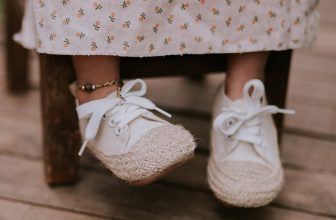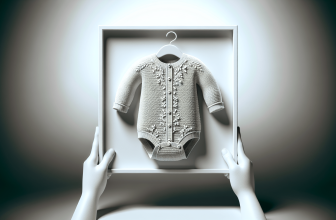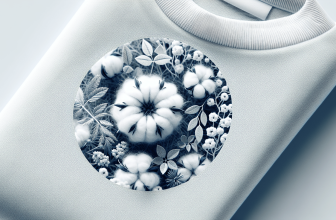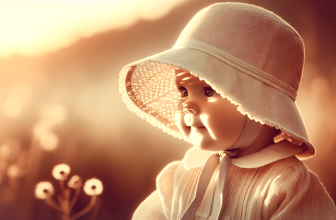Are you a conscious parent looking for sustainable choices in baby clothing? Look no further! In this article, we will explore the world of eco-friendly baby clothing and all the benefits it brings. From organic cotton to recycled materials, we will discover the various options available that not only prioritize your baby’s comfort but also have a positive impact on the environment. Get ready to embark on an exciting journey of sustainable fashion for your little one!

This image is property of images.pexels.com.
Organic Cotton Clothing
Benefits of organic cotton
Organic cotton clothing offers several benefits that make it a popular choice for conscious parents. Firstly, organic cotton is grown without the use of synthetic pesticides or genetically modified seeds. This means that it is free from harmful chemicals that can cause skin irritations or allergies. Organic cotton clothing is also softer and more breathable than conventional cotton, providing maximum comfort for your little one’s sensitive skin. Additionally, organic cotton farming practices prioritize soil health, biodiversity, and water conservation, making it an environmentally friendly choice.
Certifications to look for
When purchasing organic cotton clothing for your baby, it’s important to look for reliable certifications that ensure its authenticity. The Global Organic Textile Standard (GOTS) is one of the most recognized certifications for organic textiles. It ensures that the entire production process, from farming to manufacturing, meets strict organic standards. Another certification to look for is the Organic Content Standard (OCS), which verifies the percentage of organic fibers in a product.
Popular brands
There are several popular brands that specialize in organic cotton clothing for babies. Some notable options include:
-
Burt’s Bees Baby: Known for their adorable designs and high-quality organic cotton garments, Burt’s Bees Baby offers a wide range of clothing and accessories for infants and toddlers.
-
Kate Quinn Organics: This brand combines style and sustainability with their organic cotton clothing collections. They offer a variety of fashionable options for babies, from onesies to dresses.
-
L’ovedbaby: L’ovedbaby focuses on creating versatile and gender-neutral organic cotton basics for babies. Their clothing is designed for maximum comfort and ease of dressing.
Bamboo-based Clothing
Advantages of bamboo fabric
Bamboo fabric has gained popularity in recent years due to its many advantages. Bamboo is a highly renewable resource that grows quickly and requires minimal water or pesticides to thrive. Bamboo fabric is naturally breathable, hypoallergenic, and provides excellent moisture-wicking properties. It is also incredibly soft and gentle on a baby’s delicate skin, making it a perfect choice for sensitive individuals.
Environmental benefits
In addition to its numerous benefits for babies, bamboo fabric also has significant environmental advantages. Bamboo is considered one of the most sustainable plant fibers as it grows rapidly without the need for extensive irrigation or chemical fertilizers. It also releases more oxygen into the atmosphere and absorbs more carbon dioxide compared to other plants. Choosing bamboo-based clothing for your little one helps reduce your carbon footprint and supports a more eco-friendly future.
Recommended brands
Several brands specialize in bamboo-based clothing for babies. Here are a few recommendations:
-
Kyte BABY: Kyte BABY offers a wide range of bamboo clothing options, including onesies, sleepwear, and accessories. Their clothing is known for its incredibly soft and breathable qualities.
-
KicKee Pants: Kickee Pants combines bamboo fabric with adorable designs to create comfortable and fashionable baby garments. Their collections include everything from rompers to pajamas.
-
MORI: MORI offers a range of bamboo and organic cotton blend clothing for babies. Their designs are timeless and focus on simplicity and comfort.
Recycled Materials
Types of materials used
In the quest for more sustainable baby clothing options, recycled materials have gained prominence. There are various types of materials used in recycled clothing, including:
-
Recycled polyester: Made from post-consumer plastic bottles, recycled polyester reduces the dependence on virgin petroleum-based polyester production.
-
Recycled cotton: By reusing cotton fibers from pre-consumer waste or discarded clothing, recycled cotton helps reduce the demand for new cotton production.
-
Recycled nylon: Similar to recycled polyester, recycled nylon is derived from post-consumer waste, such as fishing nets or carpet fibers.
Benefits of recycled clothing
Opting for recycled clothing offers several benefits. Firstly, it helps divert waste from landfills and reduces the demand for new raw materials. Recycling also reduces energy consumption and greenhouse gas emissions associated with traditional manufacturing processes. Additionally, recycled clothing can be equally as durable and high-quality as conventional alternatives, ensuring that your baby’s clothing will last.
Brands offering recycled options
When looking for brands that prioritize the use of recycled materials in their baby clothing, consider the following options:
-
RE:UNIQUE: RE:UNIQUE specializes in creating stylish and sustainable baby clothing using a combination of recycled cotton and polyester. Their clothing is designed to be soft, comfortable, and long-lasting.
-
Little Footprint Clothing: Little Footprint Clothing offers a range of baby clothes made from recycled fibers, including recycled polyester and recycled cotton blends. They focus on creating eco-friendly clothing without compromising on style.
-
Finn + Emma: Finn + Emma is committed to using organic cotton and recycled materials in their baby clothing. They offer a variety of stylish and sustainable options for conscious parents.
Natural Dyes
Advantages of natural dyes
Using natural dyes in baby clothing provides several advantages. Natural dyes are derived from plant sources, such as flowers, leaves, and roots, making them non-toxic and safe for your baby’s sensitive skin. These dyes are free from harmful chemicals and carcinogens found in synthetic dyes, reducing the risk of skin irritations or allergies. Natural dyes also create unique and vibrant colors that add a touch of beauty and uniqueness to your baby’s wardrobe.
Common natural dyes used
Several common natural dyes are used in the production of baby clothing. These include:
-
Indigo: Derived from the plant Indigofera tinctoria, indigo produces beautiful shades of blue. It has been used for centuries and is known for its durability.
-
Turmeric: Turmeric, a vibrant spice, can produce warm yellow hues in baby clothing. It has anti-inflammatory properties and is safe for sensitive skin.
-
Madder root: Madder root is a natural dye that can create shades of red, pink, and orange. It is derived from the Rubia tinctorum plant.
Brands using natural dyes
If you’re looking for baby clothing made with natural dyes, consider the following brands:
-
Pippins: Pippins offers a range of baby clothing made with natural dyes, including indigo and turmeric. Their designs are colorful and playful, perfect for your little one.
-
The Simple Folk: The Simple Folk focuses on using natural dyes and organic fabrics in their baby clothing. Their garments are timeless and designed for comfort and durability.
-
Aiayu: Aiayu is a sustainable brand that uses natural dyes and organic materials in their baby clothing collections. Their designs are minimalistic and sophisticated.
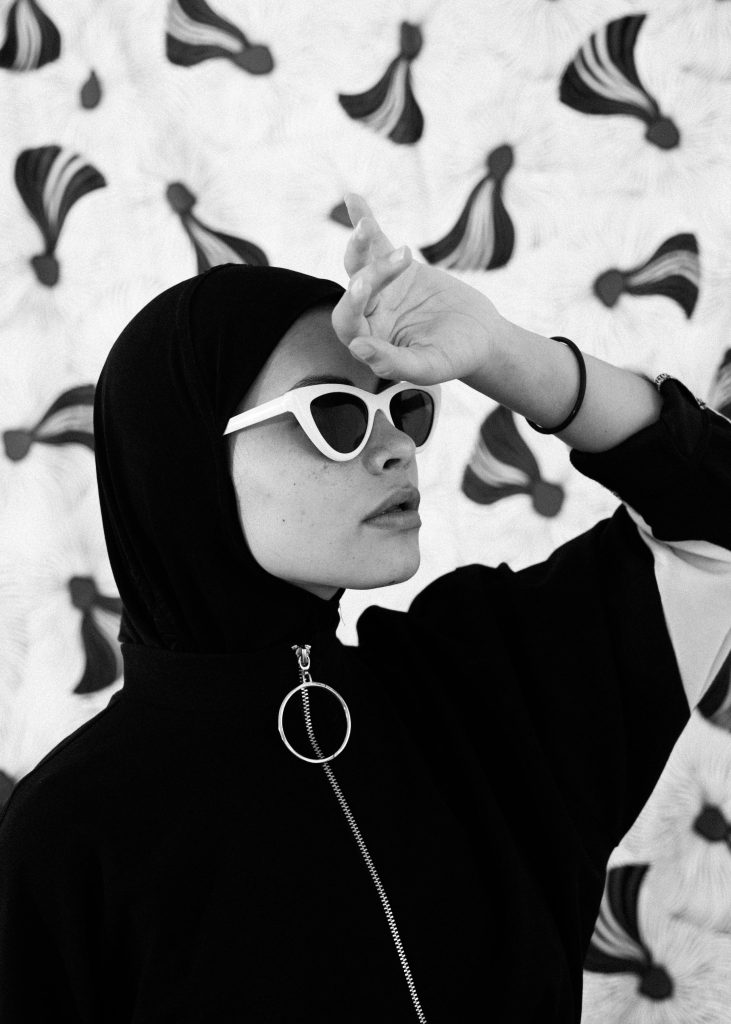
This image is property of images.pexels.com.
Second-Hand Clothing
Benefits of second-hand clothing
Opting for second-hand clothing for your baby provides several benefits. Firstly, it is a more sustainable choice as it extends the lifespan of garments and reduces the demand for new clothing production. Second-hand clothing is often more affordable than buying new, which is beneficial considering how quickly babies grow out of their clothes. It also gives you the opportunity to find unique and vintage pieces that add character to your baby’s wardrobe.
Tips for finding quality second-hand items
When shopping for second-hand baby clothing, keep the following tips in mind:
-
Inspect the items carefully: Look for any signs of wear, stains, or damage. Ensure that zippers, buttons, and snaps are in good working condition.
-
Consider the fabric: Opt for natural fibers that are safe and comfortable for your baby’s skin, such as cotton or linen.
-
Wash before use: After purchasing second-hand clothing, it’s essential to wash them thoroughly before dressing your baby to remove any potential allergens or dirt.
Online platforms for second-hand baby clothes
There are various online platforms where you can find high-quality second-hand baby clothes. Some notable options include:
-
ThredUP: ThredUP offers a wide selection of second-hand baby clothing, ranging from popular brands to boutique finds. They carefully curate their collection to ensure excellent quality.
-
Kidizen: Kidizen is a marketplace specifically for children’s clothing, including baby items. It allows you to buy and sell gently-used clothing, making it a convenient platform for eco-conscious parents.
-
Facebook Marketplace: Facebook Marketplace is a popular online platform where individuals can sell their used items, including baby clothing. It’s an excellent place to find local options and connect with sellers directly.
Upcycled Clothing
What is upcycled clothing
Upcycled clothing refers to garments that have been creatively transformed from old, unwanted materials into new, unique pieces. It involves repurposing and giving new life to materials that would otherwise end up in landfills. Upcycling allows for creativity and individuality in design while promoting sustainability and reducing waste.
Creative upcycling ideas
There are endless creative ideas for upcycled baby clothing. Some popular examples include:
-
Patchwork clothing: Using fabric scraps, create unique patchwork designs on baby clothes, adding color and texture.
-
Applique designs: Add applique designs to plain clothing by cutting out shapes from old fabric and stitching or glueing them onto the garment.
-
Mix and match materials: Combine different materials, such as repurposed sweaters or t-shirts, to create one-of-a-kind baby clothing pieces.
Artisans and brands specializing in upcycled baby clothes
Several artisans and brands specialize in upcycled baby clothing, offering unique and sustainable options. Consider the following:
-
UltraViolet Kids: UltraViolet Kids creates upcycled baby clothing using reclaimed and vintage materials. Their pieces are vibrant, playful, and eco-friendly.
-
Baby Bear’s Den: Baby Bear’s Den offers a range of upcycled baby clothing, including rompers, dresses, and accessories. Each item is handcrafted from pre-loved fabrics, ensuring uniqueness.
-
Wildly Co: Wildly Co focuses on upcycled clothing for kids, including babies. Their garments are made from a mix of upcycled and sustainable fabrics, creating stylish and eco-friendly options.

This image is property of images.pexels.com.
Fair Trade Clothing
Importance of fair trade in baby clothing
Choosing fair trade baby clothing supports ethical and sustainable practices in the fashion industry. Fair trade ensures that workers involved in the production process receive fair wages and work in safe and humane conditions. It promotes transparency and empowers workers, often marginalized communities, by providing them with better opportunities and standards of living.
Certifications to ensure fair trade
When looking for fair trade baby clothing, certifications provide assurance of ethical practices. Look out for the following certifications:
-
Fairtrade International: Fairtrade International is a well-known certification that guarantees fair wages and working conditions for farmers and workers involved in the supply chain.
-
Fair Trade USA: Fair Trade USA ensures fair wages and focuses on social and environmental sustainability. Their certification covers a wide range of products, including textiles.
Ethical brands promoting fair trade
Numerous ethical brands promote fair trade in the production of baby clothing. Here are a few recommendations:
-
Finn + Emma: Besides their commitment to using organic and recycled materials, Finn + Emma also partners with fair trade groups to ensure fair wages and practices in their production.
-
Jonano: Jonano is a brand known for its fair trade practices and sustainable materials. They offer a variety of baby clothing items made from organic and eco-friendly fabrics.
-
Colored Organics: Colored Organics specializes in fair trade organic cotton clothing for babies and children. They prioritize fair labor practices and sustainability in their production processes.
Minimalist Wardrobe
Benefits of a minimalist baby wardrobe
Opting for a minimalist baby wardrobe offers several advantages. Firstly, it simplifies the decision-making process when it comes to dressing your baby, saving you time and stress. A minimalist wardrobe also promotes conscious consumption and helps reduce waste by focusing on quality items that are versatile and long-lasting. By having fewer items, you can better appreciate and care for each garment, ensuring they stay in good condition for future use.
Essential clothing items for a minimalist approach
Building a minimalist baby wardrobe requires focusing on essential items that serve multiple purposes. Here are some key clothing items to consider:
-
Onesies: Versatile and practical, onesies can be easily layered and worn alone. Opt for neutral colors that can be mixed and matched with other pieces.
-
Leggings or pants: Comfortable leggings or pants provide flexibility for your baby’s movements and can be paired with various tops.
-
Sleepsacks: Sleepsacks are a safe and cozy alternative to baby blankets. Opt for lightweight options for warmer months and warmer ones for cooler seasons.
Tips for maintaining a minimalist wardrobe
To maintain a minimalist baby wardrobe, consider the following tips:
-
Invest in quality: Choose garments made from durable and high-quality materials to ensure they last through multiple wears and washes.
-
Practice regular decluttering: Regularly assess your baby’s wardrobe and remove items that no longer fit or serve a purpose. Donate or pass them on to someone who can use them.
-
Repair and repurpose: Instead of immediately discarding clothing with minor damage, learn basic mending techniques or consider repurposing them into other useful items.
Local and Handmade Clothing
Supporting local artisans and businesses
Opting for local and handmade baby clothing supports local artisans and businesses within your community. By purchasing their products, you contribute to their livelihoods and help them thrive. Supporting local artisans also promotes unique and individualized clothing options that are not mass-produced, ensuring your baby stands out in style.
Benefits of handmade clothing
Handmade clothing offers several benefits for both your baby and the environment. Firstly, it ensures attention to detail and a high level of craftsmanship that is often unmatched in mass-produced clothing. Handmade garments are made with love and care, using quality materials and construction techniques, ensuring long-lasting durability. Additionally, handmade clothing often prioritizes the use of sustainable and eco-friendly fabrics, supporting a more environmentally conscious approach to fashion.
Where to find local and handmade baby clothes
To find local and handmade baby clothing, consider the following options:
-
Craft fairs and markets: Visit local craft fairs or markets where artisans showcase their handmade products. This allows you to meet the creators in person and directly support their businesses.
-
Etsy: Etsy is an online marketplace that offers a vast range of handmade goods, including baby clothing. You can search for local artisans or explore shops that align with your style preferences.
-
Local boutiques: Explore local boutiques in your area that stock handmade baby clothing. These boutiques often curate unique selections of locally-made products, providing you with one-of-a-kind options.
Non-Toxic and Chemical-Free
Harmful chemicals to avoid in baby clothing
When choosing baby clothing, it’s essential to avoid garments treated with harmful chemicals. Some chemicals commonly found in conventional clothing include:
-
Formaldehyde: Often used in clothing to prevent wrinkling, formaldehyde is a known irritant and allergen.
-
Phthalates: Phthalates are plasticizers used in softening fabrics. They have been linked to hormone disruption and other health concerns.
-
Flame retardants: Flame retardants are frequently used in infant clothing, but they can contain harmful chemicals linked to developmental issues and other health risks.
Labels and certifications for non-toxic clothing
Look for labels and certifications that indicate clothing is non-toxic and chemical-free. Some reliable certifications and standards include:
-
Oeko-Tex Standard 100: Oeko-Tex Standard 100 ensures that clothing has been tested for harmful substances and is free from chemicals that may be harmful to human health.
-
Global Organic Textile Standard (GOTS): GOTS certification guarantees that clothing is made from organic fibers and meets strict environmental and social criteria, including the absence of harmful chemicals.
-
Made Safe: The Made Safe label ensures that products, including clothing, have been rigorously tested to be free from potentially harmful chemicals.
Trusted brands offering chemical-free options
Several brands prioritize non-toxic and chemical-free clothing for babies. Consider the following trusted options:
-
Under the Nile: Under the Nile offers a range of organic cotton baby clothing that is free from harmful chemicals and dyes. Their clothing is soft, comfortable, and safe for sensitive skin.
-
Wee Urban: Wee Urban produces baby clothing made from certified organic cotton and follows strict environmental and social standards. Their garments are free from harmful chemicals and are designed for optimal comfort.
-
Nature Baby: Nature Baby specializes in organic and chemical-free baby clothing made from natural materials. Their clothing is ethically made and adheres to the highest safety and environmental standards.
Eco-Friendly Baby Clothing: Sustainable Choices for Conscious Parents.
As conscious parents, it’s essential to consider the environmental and ethical impact of the clothing choices we make for our little ones. Eco-friendly baby clothing offers a range of sustainable options that prioritize the health of our babies and the planet. From organic cotton and bamboo-based fabrics to recycled materials and natural dyes, there are numerous alternatives that align with our values.
Organic cotton clothing has become increasingly popular due to its numerous benefits. Organic cotton is free from harmful chemicals, making it safe and gentle on your baby’s sensitive skin. It is also breathable and softer compared to conventional cotton, ensuring maximum comfort. Additionally, organic cotton farming practices prioritize soil health and water conservation, reducing the environmental impact.
When purchasing organic cotton clothing, it’s important to look for reliable certifications such as the Global Organic Textile Standard (GOTS) and the Organic Content Standard (OCS). These certifications verify that the entire production process meets strict organic standards, ensuring the authenticity of the clothing.
Several popular brands specialize in organic cotton clothing for babies, offering a wide range of options. Burt’s Bees Baby, Kate Quinn Organics, and L’ovedbaby are known for their high-quality and stylish organic cotton garments.
Bamboo-based clothing has also gained popularity due to its many advantages. Bamboo is a highly renewable resource that grows quickly and requires minimal water or pesticides. Bamboo fabric is naturally breathable, hypoallergenic, and provides excellent moisture-wicking properties. It is also incredibly soft and gentle on a baby’s delicate skin, making it a perfect choice for those with sensitive skin.
Aside from its benefits for babies, bamboo fabric also has significant environmental advantages. Bamboo grows rapidly and releases more oxygen into the atmosphere while absorbing more carbon dioxide compared to other plants. Choosing bamboo-based clothing for your baby helps reduce your carbon footprint and supports a more sustainable future.
Kyte BABY, KicKee Pants, and MORI are well-known brands that specialize in bamboo-based clothing for babies. These brands offer a variety of options, including onesies, sleepwear, and accessories, all made from incredibly soft and sustainable bamboo fabric.
Recycled materials are an innovative solution for more sustainable baby clothing options. Recycled polyester, recycled cotton, and recycled nylon are some of the materials used in the production of recycled clothing. By reusing materials from pre-consumer waste or discarded clothing, these brands help reduce waste and the demand for new raw materials.
The benefits of recycled clothing go beyond environmental advantages. Recycled clothing helps divert waste from landfills, reduces energy consumption, and lowers greenhouse gas emissions. Additionally, recycled clothing can be equally as durable and high-quality as conventional alternatives. Brands such as RE:UNIQUE, Little Footprint Clothing, and Finn + Emma offer a range of clothing options made from recycled materials, ensuring both sustainability and style.
Natural dyes provide a non-toxic and eco-friendly alternative to synthetic dyes used in conventional clothing. Natural dyes are derived from plant sources such as flowers, leaves, and roots, making them safe and gentle on your baby’s skin. These dyes are free from harmful chemicals and carcinogens found in synthetic dyes, reducing the risk of skin irritations or allergies.
Common natural dyes used in baby clothing include indigo, turmeric, and madder root. These natural dyes create unique and vibrant colors, adding beauty and uniqueness to your baby’s wardrobe. Brands like Pippins, The Simple Folk, and Aiayu prioritize the use of natural dyes in their baby clothing collections, ensuring a safe and sustainable option for your little one.
Opting for second-hand clothing is an excellent choice for conscious parents who want to reduce waste and extend the lifespan of garments. Second-hand clothing for babies offers several benefits, including affordability and the opportunity to find unique and vintage pieces. It also reduces the demand for new clothing production and promotes a more sustainable approach to fashion.
When shopping for second-hand baby clothing, make sure to inspect the items carefully for any signs of wear, stains, or damage. Consider the fabric and opt for natural fibers such as cotton or linen. After purchasing second-hand clothing, it’s essential to wash them thoroughly before dressing your baby to remove any potential allergens or dirt.
Online platforms such as ThredUP, Kidizen, and Facebook Marketplace are excellent places to find high-quality second-hand baby clothes. These platforms offer a wide selection of gently-used items and enable you to connect with sellers directly, ensuring a smooth and convenient shopping experience.
Upcycled clothing offers a creative and sustainable solution for conscious parents. Upcycling involves transforming old, unwanted materials into new, unique pieces, giving them a new lease on life. It promotes creativity, individuality, and reduces waste by repurposing materials that would otherwise end up in landfills.
There are various creative ideas for upcycled baby clothing, such as creating patchwork designs, adding applique designs, or combining different materials to create one-of-a-kind pieces. Brands like UltraViolet Kids, Baby Bear’s Den, and Wildly Co specialize in upcycled baby clothing, offering sustainable, stylish, and eco-friendly options for your little one.
Fair trade clothing ensures ethical and sustainable practices in the fashion industry. It guarantees fair wages and safe working conditions for farmers and workers involved in the production process. Choosing fair trade baby clothing supports transparency, social responsibility, and empowers marginalized communities.
Certifications to look for when purchasing fair trade baby clothing include Fairtrade International and Fair Trade USA. These certifications ensure ethical practices and promote the livelihoods of workers involved in the supply chain.
Brands like Finn + Emma, Jonano, and Colored Organics prioritize fair trade practices in the production of their baby clothing. They offer a variety of stylish and sustainable options that support fair wages and ethical standards.
A minimalist baby wardrobe offers numerous benefits for conscious parents. It simplifies the decision-making process, promotes conscious consumption, and helps reduce waste. Essential clothing items for a minimalist approach include onesies, leggings or pants, and sleepsacks. Investing in quality items and practicing regular decluttering are key to maintaining a minimalist wardrobe.
Supporting local artisans and businesses not only benefits your community but also promotes unique and individualized clothing options. Handmade clothing offers attention to detail, high craftsmanship, and a focus on quality materials. It also often prioritizes sustainable fabrics, supporting a more environmentally conscious approach to fashion.
Local craft fairs, markets, Etsy, and local boutiques are excellent places to find local and handmade baby clothing. These options allow you to directly support artisans and businesses in your area, ensuring the uniqueness of your baby’s wardrobe.
Choosing non-toxic and chemical-free clothing for your baby is essential for their health and well-being. Avoiding chemicals such as formaldehyde, phthalates, and flame retardants is crucial in reducing potential health risks. Labels and certifications such as Oeko-Tex Standard 100, Global Organic Textile Standard (GOTS), and Made Safe ensure clothing is free from harmful substances.
Trusted brands that offer non-toxic and chemical-free options for baby clothing include Under the Nile, Wee Urban, and Nature Baby. These brands prioritize the use of organic and safe materials, ensuring your baby is dressed in clothing that supports their health and the environment.
With a wide range of eco-friendly baby clothing options available, conscious parents have the opportunity to make sustainable choices for their little ones. From organic cotton and bamboo-based fabrics to recycled materials and natural dyes, these alternatives prioritize the health and well-being of your baby while minimizing the environmental impact. By opting for eco-friendly baby clothing, you can dress your little one in style while making a positive difference for the planet.



